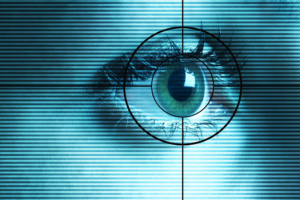
‘Visual DNA’ Effort Looks to Outdo Deep Neural Nets

(Image: Shutterstock)
A new AI initiative aims to catalog about 1 million high-resolution images according to their “visual DNA” using supercomputer-powered vision and an emerging technique called volume learning.
The Visual Genomes Foundation said this week it is launching the “public global catalog” project to enable new AI applications. The foundation, which is backed by visual AI and computer vision specialist Krig Research, said it will use a “synthetic vision” model to catalog the images. The model mimics the brain’s visual pathway, and is said to surpass deep learning capabilities by leveraging neuroscience and computer vision advances.
Exascale visual DNA promises to usher in a new class of AI applications collectively referred to as “Learning, Cataloging and Inspection.” LCI technology could be used, for example, to guide self-driving cars or drones by finding known objects and identifying unknown objects.
Another potential application of visual DNA is time-sequence image inspection for medical diagnostics to look for changes in MRI, CT scans or X-ray images, the foundation said this week.
Proponents describe volume learning as a technique for breaking down images into millions of visual DNA features ranging from shape, color, texture and glyphs, the latter in the form of icons or pictograms. Those puzzle pieces are then catalogued into “strands of related visual DNA,” the foundation said, that describe higher-level visual objects.
The resulting visual DNA is then “sequenced” from each image and catalogued in memory, then processed by “visual learning agents” to create LCI applications.
“We are working towards a global public catalog of visual DNA features to open new applications,” said Scott Krig, director of the Visual Genomes Foundation. The group claims to have a working model of the human visual system complete with the machine version of photographic memory. “This first-generation model will only get better over time as more researchers engage,” Krig added, comparing the effort to the rapid advances in deep neural networks after that approach attracted thousands of AI researchers.
The foundation also hopes its cataloging initiative will kick off a new form of visual AI called “exploratory learning” that could be used as a visual assistant to locate both known and unknown objects in a scene. “Exploratory learning is also in continuous model refinement,” the foundation said.
The cataloging effort calls for visual DNA to be collected from images presented to a synthetic vision model and stored in photographic model memory. That approach improves on “static” deep neural networks by employing computer vision that mimics human vision as a “dynamic, living, growing model” capable of continual learning. By contrast, the researchers note, deep neural network models do not change after training.
Synthetic vision also addresses processing issues related to deep neural networks. For example, researchers noted that deep nets often must rescale 4k and 8k images to a uniform smaller size to reduce computing workload. “Visual DNA are computed at full image resolution, and all fine pixel detail is preserved,” the foundation noted.
“Volume learning and visual DNA will become as ubiquitous as search engines,” Krig predicted.
Recent items:
Training Time Slashed for Deep Learning
Google AutoML Claims Machine Vision Advance
[wpsr_share_icons icons="twitter,facebook,linkedin,reddit,email" icon_size="40px" icon_bg_color="" icon_shape="circle" hover_effect="opacity" sm_screen_width="768" lg_screen_action="show" sm_screen_action="show" page_url="https://www.bigdatawire.com/2018/08/29/visual-dna-effort-looks-to-outdo-deep-neural-nets/" page_title="‘Visual DNA’ Effort Looks to Outdo Deep Neural Nets" page_excerpt="A new AI initiative aims to catalog about 1 million high-resolution images according to their “visual DNA” using supercomputer-powered vision and an emerging technique called volume learning.
The Visual Genomes Foundation said this week it is launching the “public global catalog” project to enable new AI applications. Read more…
" share_counter=""]


























